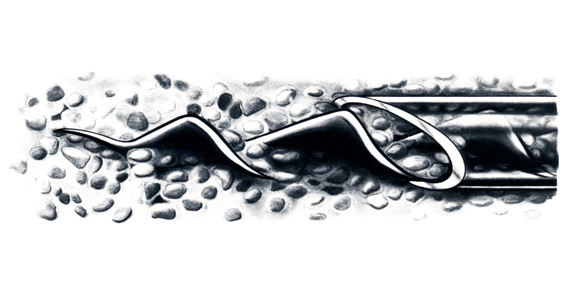For more than a quarter of a century, URSUS Medical company is manufacturing and marketing highly specialized medical instruments and equipment for diagnosis and treatment of cancer.
The company successfully combines the quality usually associated with old world craftmanship and the pride of team accomplishment. The results are finished products that are well designed, well made and of high quality.
Founded in the early 1970’s, URSUS primary business is the design and manufacture of the Rotex Screw Needle Biopsy Instrument ®. Fifty years ago needle biopsies were exclusively performed on superficial lesions by aspiration of cells through a needle. It then became clear that biopsy of deeply situated lesions in the body required a modification of the technique. Dr. Björn E. W. Nordenström – former Professor of Diagnostic Radiology, Karolinska Institute and Hospital, Stockholm, Sweden – pioneered in the use of x-ray fluorscopy to guide the insertion of the needle to a correct site. This required a new type of instrument which he described and designed as the original Rotex-Nordenström Instrument for sampling of cellular material.
The instrument was first introduced on the market by URSUS in 1975. It consists of a thin screw needle housed in a cannula with an outer diametre of 0.8 mm and a special instrument holder. The advantages of the screw needle technique were soon recognised and pointed out in comparative studies by House & Thomson (2), Sinner (3) and others. The rapid acceptance of the new technique in leading radiological and cytological quarters has thereafter led to further refinement of the instrument.
Later on ultrasound has been used in certain instances at insertion of the Rotex instrument. Another variation for guidence was developed by Dr Nordenström for stereotaxic precision samplings of non-palpable breast lesions called the Mammotest ® .The Rotex Screw Needle Biopsy Instrument ® is EC certificated (pdf) and used worldwide for guided samplings of cell material.
The Rotex instrument, with complementary addition, was later on also used as an electrode for measuring of the electric potentials of lesions and also for delivery of direct current in treatment of cancers, a method known as electrochemical treatment (EchT). The scientific background is presented in Dr Nordenströms books “Biologically Closed Electric Circuits (BCEC)” and “Exploring BCEC-systems”
